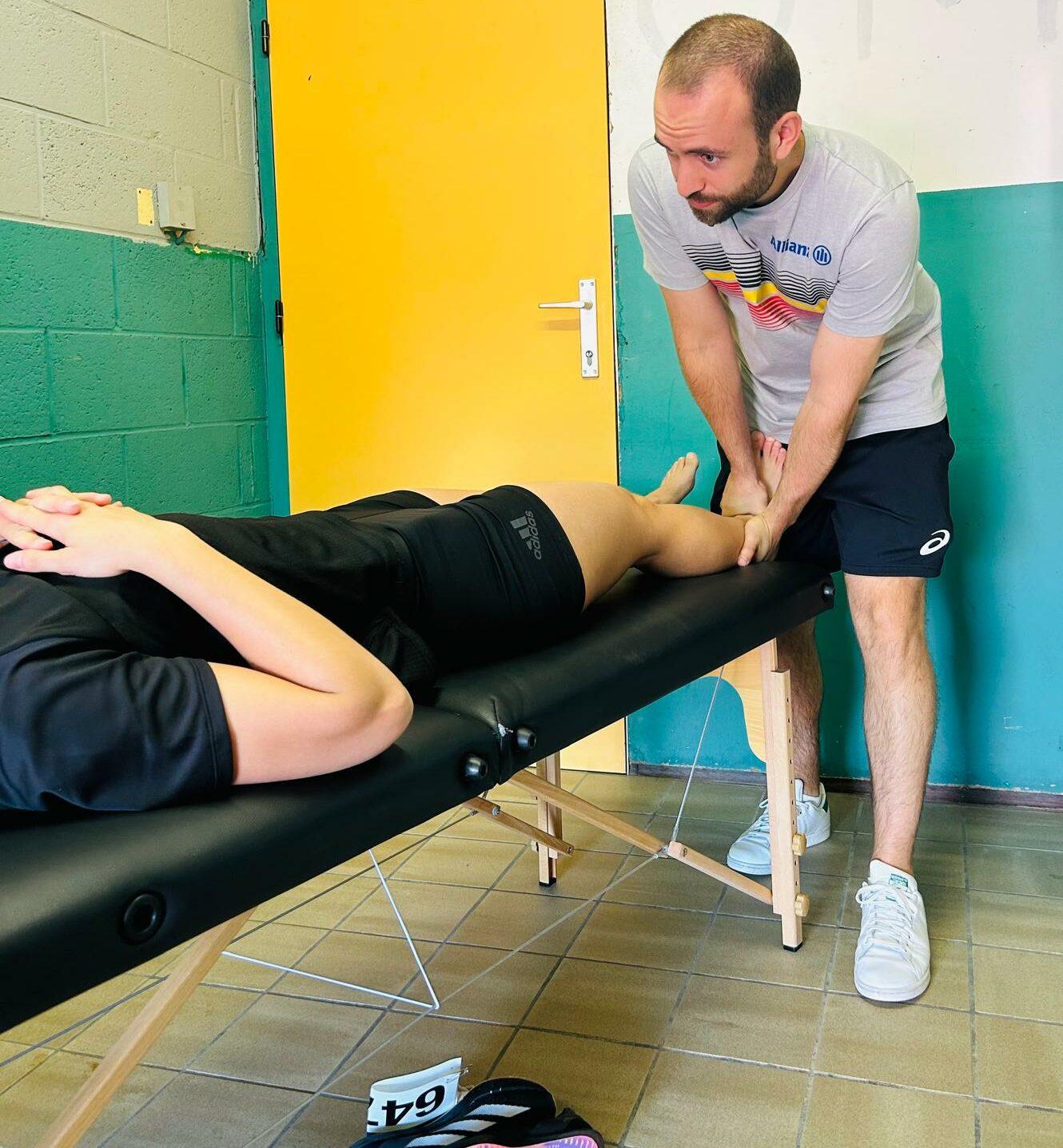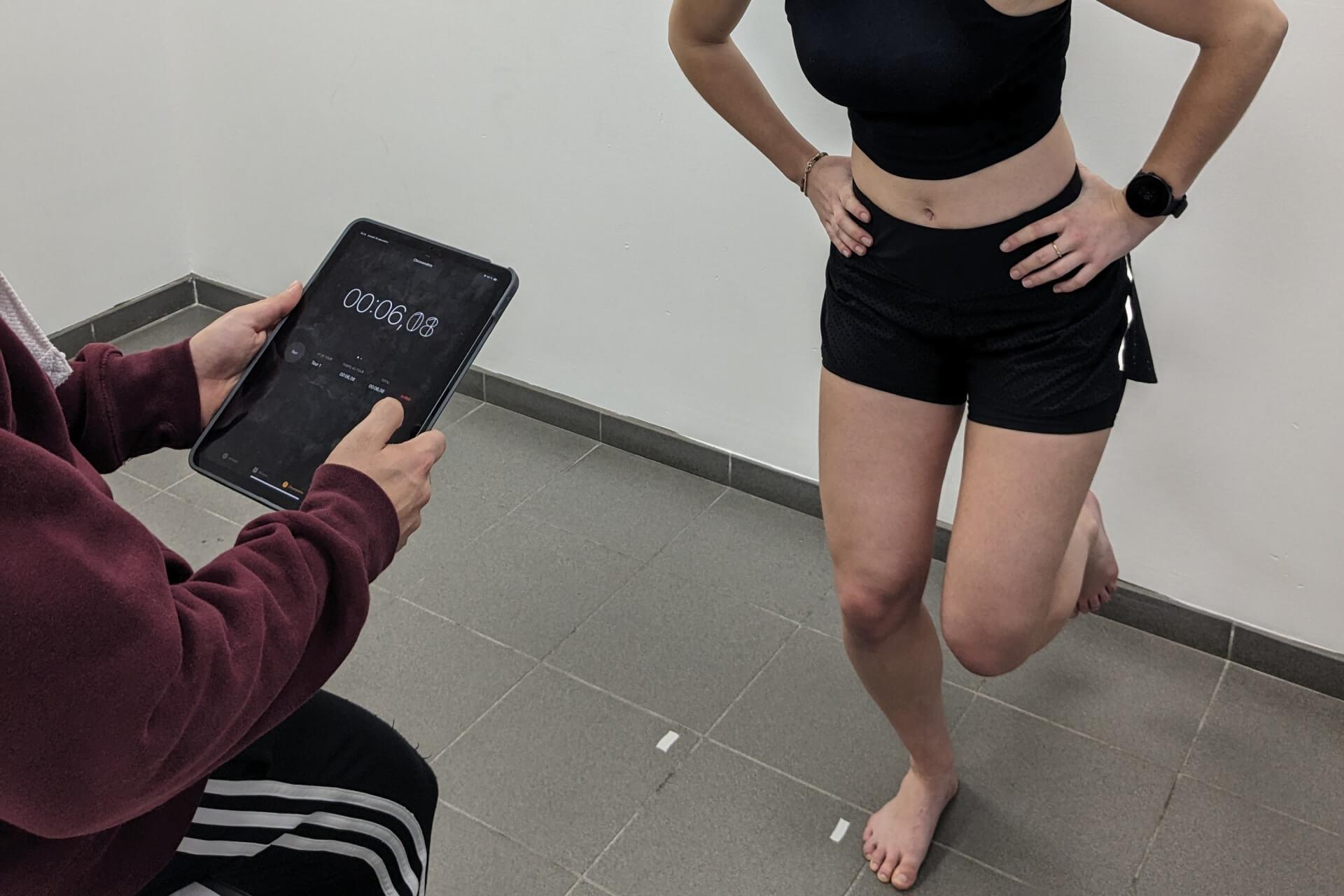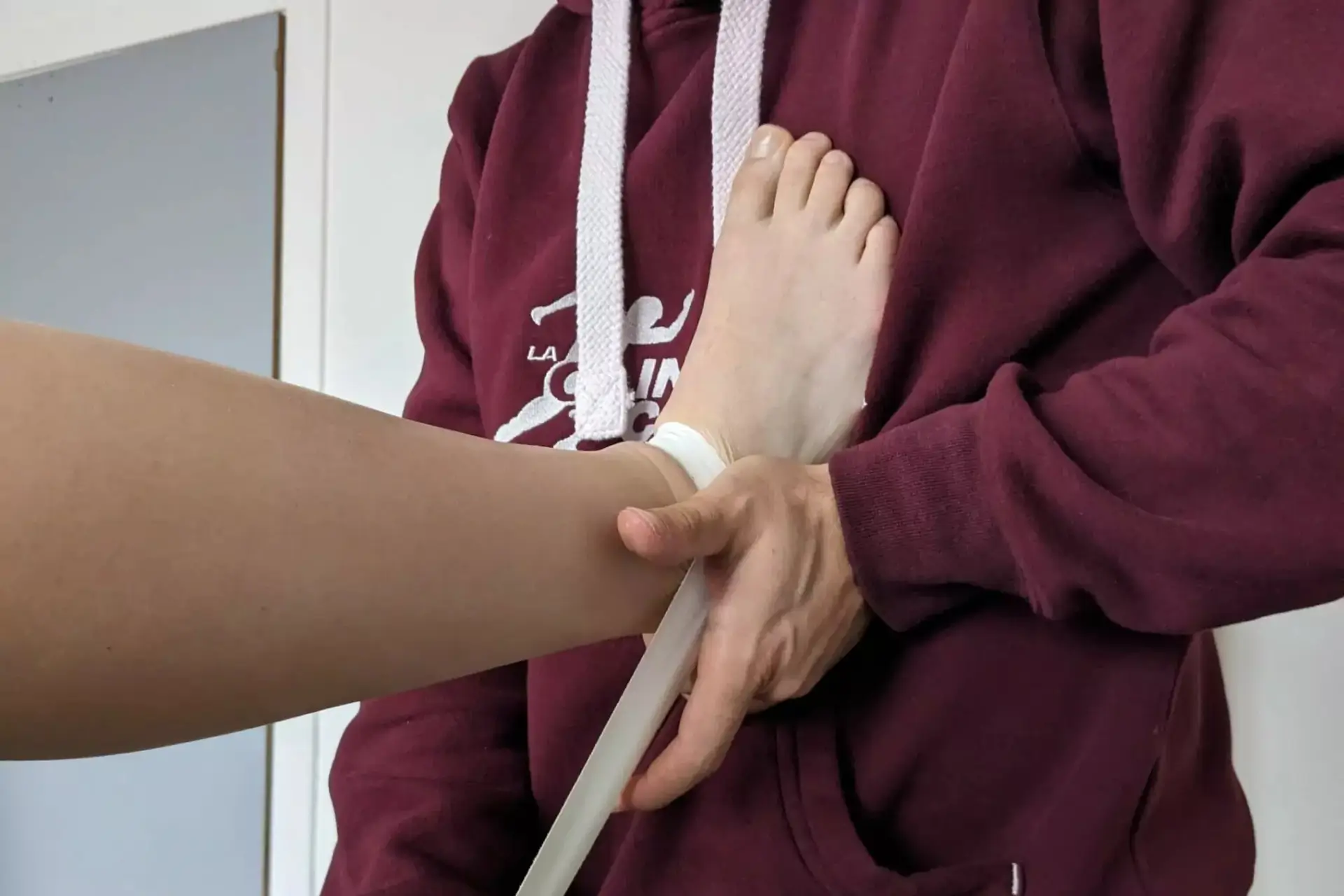How to treat an ankle sprain? The answer in 5 steps.
Welcome to the blog of Hugo Bogaerts, sports physiotherapist and Orthopedic Manual Therapist in Brussels Centre 1000 and Chaumont-Gistoux 1325, Belgium. In this article, we’ll explore ankle sprain rehabilitation based on the latest scientific recommendations. Whether you’re looking for information after an ankle sprain, a recurrence of a sprain or would like to return to your sport, this guide will answer your questions.

What to do about ankle sprain ?
Ankle sprains are a frequent injury, particularly among athletes. To ensure rapid healing and avoid the risk of chronic ankle instability, it is essential to follow an appropriate treatment protocol. In 40% of cases, a sprain that is not properly treated evolves into chronic instability.
We will therefore carry out a 2-step examination of your ankle: a clinical examination to check bone and ligament integrity; a functional examination of the ankle.
Key steps in ankle sprain assessment: the ROAST Protocol
The ROAST (Rehabilitation-Oriented ASsessmenT) protocol is a tool used by orthopedic manual therapists and sports physiotherapists to carry out a structured clinical assessment of lateral ankle sprains. This protocol enables specific aspects of the injury to be targeted and appropriate management to be planned. Each ROAST step is described below:
Assessing the Mechanism of Injury: The first step is to identify the cause of the sprain. This includes understanding the context in which the sprain occurred, such as a sudden inversion or a fall. This information helps determine which ligament structures are potentially affected.
Assessment of Bone Integrity: It is essential to check for bone fractures associated with the sprain. The assessment often relies on clinical criteria (such as the Ottawa Ankle Rules) to determine whether imaging is necessary.
Ligament integrity: Ligament stability of the ankle is assessed via clinical tests, such as the anterior drawer test, to identify signs of ligament rupture. This provides a better understanding of the severity of the injury.
Range of Motion (ROM): Measuring the ankle’s range of motion helps to assess functional limitations and adapt mobility exercises. Ankle dorsiflexion range of motion is often reduced following an ankle sprain.
Arthrokinematic Mobility Assessment: The arthrokinematic mobility test verifies the range of joint motion, ensuring that there is no posterior talar glide deficit.
Balance assessment: Postural control deficits will be addressed through balance exercises, which are necessary to prevent recurrence of sprains.
Muscle strength: An assessment of ankle muscle strength is essential not only to identify potential imbalances, but also to guide the necessary strengthening program within rehabilitation.
Assessment of functional performance: Finally, performance tests will be carried out to assess the ankle’s ability to withstand functional loads in everyday or during sports practice.
This structured protocol, by identifying and treating every aspect of the sprain, enables more targeted and personalized management, facilitating a return to optimal function. For further information or a personalized assessment, please do not hesitate to make an appointment on this dedicated page.

In case of acute pain, swelling and difficulty walking after a sprain, here are the steps to follow with the PEACE & LOVE protocol, a more complete and recent approach than the traditional RICE :
PEACE & LOVE protocol
The PEACE & LOVE protocol is a two-step approach that includes both protection and action phases for optimal recovery.
Phase PEACE : “Immediately after injury, do no harm and let Peace guide your approach”.
P for Protection: Protect the injured area by avoiding pain-inducing movements for the first few days after the sprain. Use a splint if necessary to limit uncontrolled movements.
E for Elevation: Raise the ankle above heart level as much as possible, which helps reduce swelling by promoting venous return.
A for Absence of anti-inflammatories: Avoid anti-inflammatories, as inflammation is a natural healing process. Interfering with this process can, in some cases, slow down tissue repair.
C for Compression: Apply compression with a bandage to reduce swelling. Make sure the bandage is not too tight to avoid cutting off blood circulation.
E for Education: Ask a sports physiotherapist about the injury and the steps involved in rehabilitation. Active recovery is crucial, and it’s important to understand that prolonged rest can lead to structural fragility.
Phase LOVE : “After the first days have passed, soft tissues need Love”.
L for Load: Gradually reintroduce a light load on the joint. As soon as pain allows, start moving the ankle. A gradual return to weight-bearing helps tissues to adapt and promotes better recovery.
O for Optimism: Maintain a positive, confident attitude towards recovery. Studies show that mindset and motivation play a significant role in recovery from musculoskeletal injury.
V for Vascularization: Stimulate blood circulation with pain-free activities such as cycling or swimming. This promotes healing by bringing more oxygen and nutrients to injured tissue.
E for Exercise: Rehabilitation exercises are essential to strengthen the ankle and restore balance. Specific exercises help reduce the risk of recurrence and restore optimal function.
Sports Physiotherapy
When can you walk again after an ankle sprain?
When to resume walking depends on the severity of the sprain, symptoms and pain level. According to the Journal of Orthopaedic & Sports Physical Therapy (JOSPT) guidelines, here are the recommended steps for a safe return to walking:
Initial assessment of weight-bearing: We recommend gradually introducing ankle weight-bearing as soon as pain subsides. The use of crutches may be useful to reduce the initial load, particularly for moderate to severe sprains.
Use of a splint or bandage: A splint or bandage can help stabilize the ankle and provide additional support, making it easier to resume walking without causing further injury.
Progressive weight-bearing protocol: Start with partial weight-bearing and gradually increase the load until normal walking is possible, depending on tolerance and absence of pain. This step should be guided by a professional to avoid too rapid a recovery.
Muscle rehabilitation and balance: Alongside the abandonment of support devices (such as splints), balance and strength of the ankle muscles will be developed through specific exercises.
Ankle Dorsiflexion Assessment: Restoring normal range of motion, particularly in dorsiflexion, is essential for functional walking. Specific exercises to regain this range can be prescribed according to your progress.
Transition to Unassisted Walking: Once you recover the ability to walk without pain, with a good range of motion and satisfactory balance, you can gradually resume walking without a splint or crutch.
These steps enable a safe, gradual return to walking.

When to return to sport after an ankle sprain?
After an ankle sprain, it’s natural to want to get back to sporting activities as soon as possible. However, to avoid the risk of recurrence or chronic ankle instability, it is essential to follow a rehabilitation protocol based on objective criteria. The PAASS, validated by international experts, proposes five key aspects to be assessed in order to decide on a safe return to sport. These aspects will be assessed in physiotherapy sessions using the Ankle-GO score, a valuable tool for checking your progress at every stage:
Pain: Pain management is essential. Before returning to sport, pain must be kept under control, not only at rest, but also during low-intensity sporting activities.
Ankle function: This includes range of motion, muscle strength and endurance. An assessment with the Ankle-GO Score helps to verify that the ankle is gradually returning to optimal function. This tool integrates several functional tests (such as static and dynamic postural control tests), which reliably measure balance capabilities.
Athlete perception: Confidence in the ankle and lack of fear of re-injury are important factors in choosing a safe return to sport. The Ankle-GO score includes an assessment of the athlete’s perception of stability and mental preparation, both of which are associated with a safer return to sport.
Functional performance: Before returning to your sport, it’s a good idea to test your ankle in sport-related situations, such as jumping, rapid changes of direction and activity-specific agility. Ankle-GO’s performance tests, the side hop test and the figure of 8 hop test, check whether your ankle can withstand the stresses of sport without risk of sprain recurrence.

Why consult me to treat your ankle sprain?
If you want to return to sport after an ankle sprain, an assessment with a specialist physiotherapist can make all the difference. Using tools such as the ROAST and Ankle-GO Score, I’ll monitor your progress precisely to ensure a safe and sustainable return to your sporting activity. Don’t let aches and pains or a new injury prevent you from enjoying your sport. Book an appointment today for a full assessment and personalized rehabilitation program.
Continue your journey to recovery with confidence with Hugo Bogaerts, your sports physiotherapy expert affiliated to the Belgian Federation of Sports Physiotherapy.
 info@hugokine.com
info@hugokine.com +32 4 73 95 42 83
+32 4 73 95 42 83